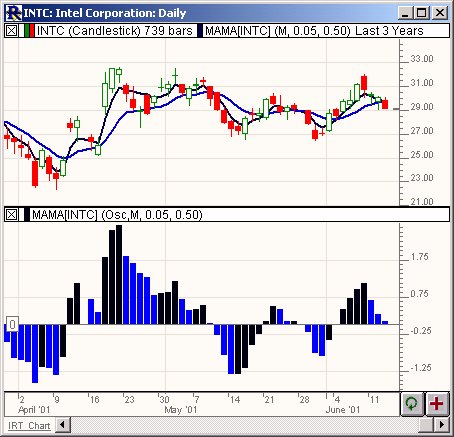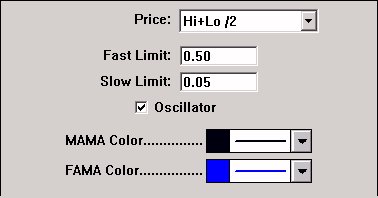The MESA Adaptive Moving Average adapts to price movement based on the rate of change of phase as measured by the Hilbert Transform Discriminator. (Stocks and Commodities, Dec. 2000, p. 19).This method features a fast attack average and a slow decay average so that composite average rapidly ratchets behind price changes and holds the average value until the next ratchet occurs. The complex calculations of the MAMA can be seen above. For a more detailed description of MAMA, see "Mesa Adaptive Moving Average", Stocks and Commodities Magazine, August 2001.
Presentation

Above is a Daily Chart of the Intel Corporation (INTC). The MESA Adaptive Moving Average (MAMA) is added both as an oscillator (with the preferences below) and as individual lines overlaying the price data.


